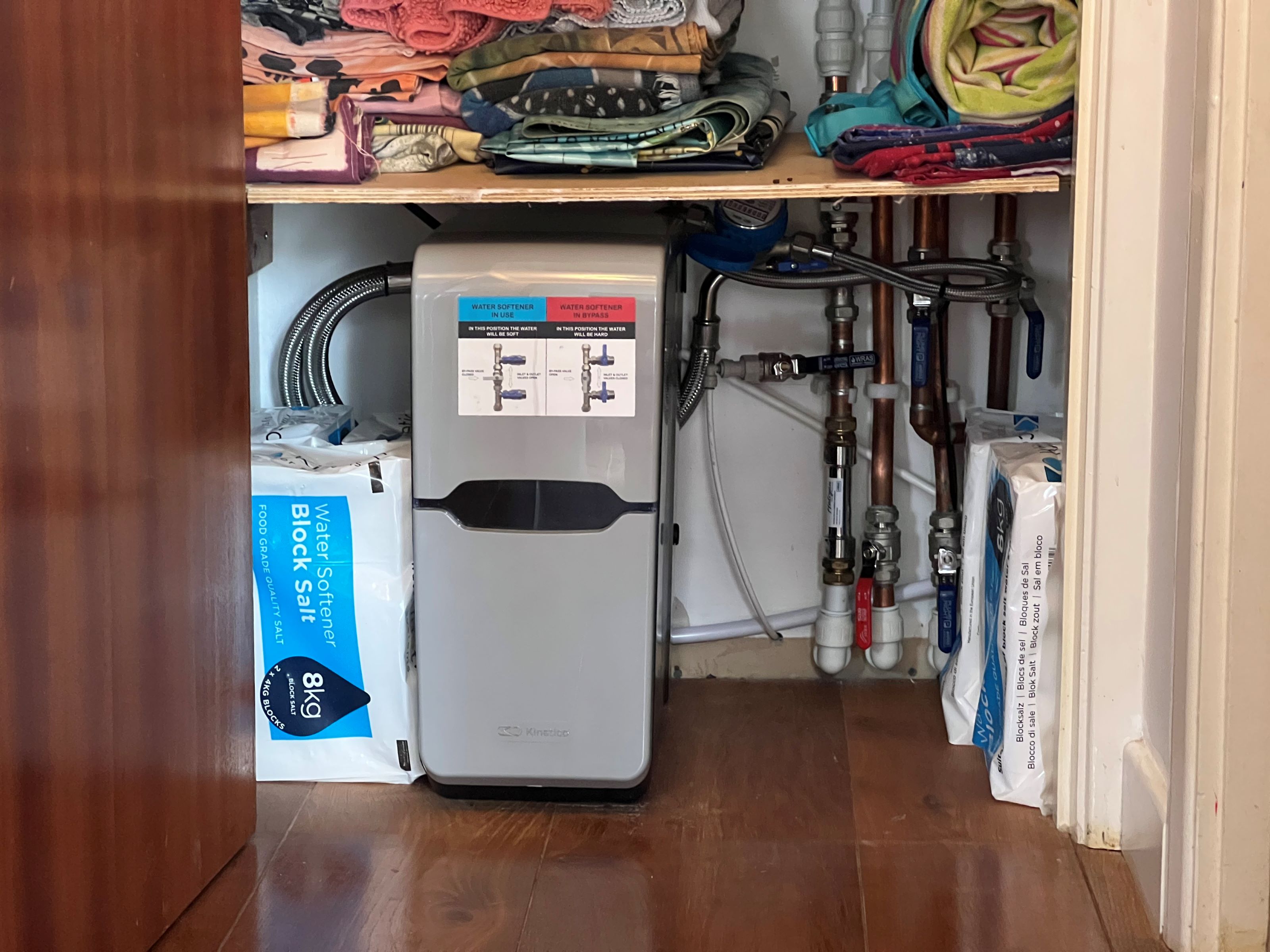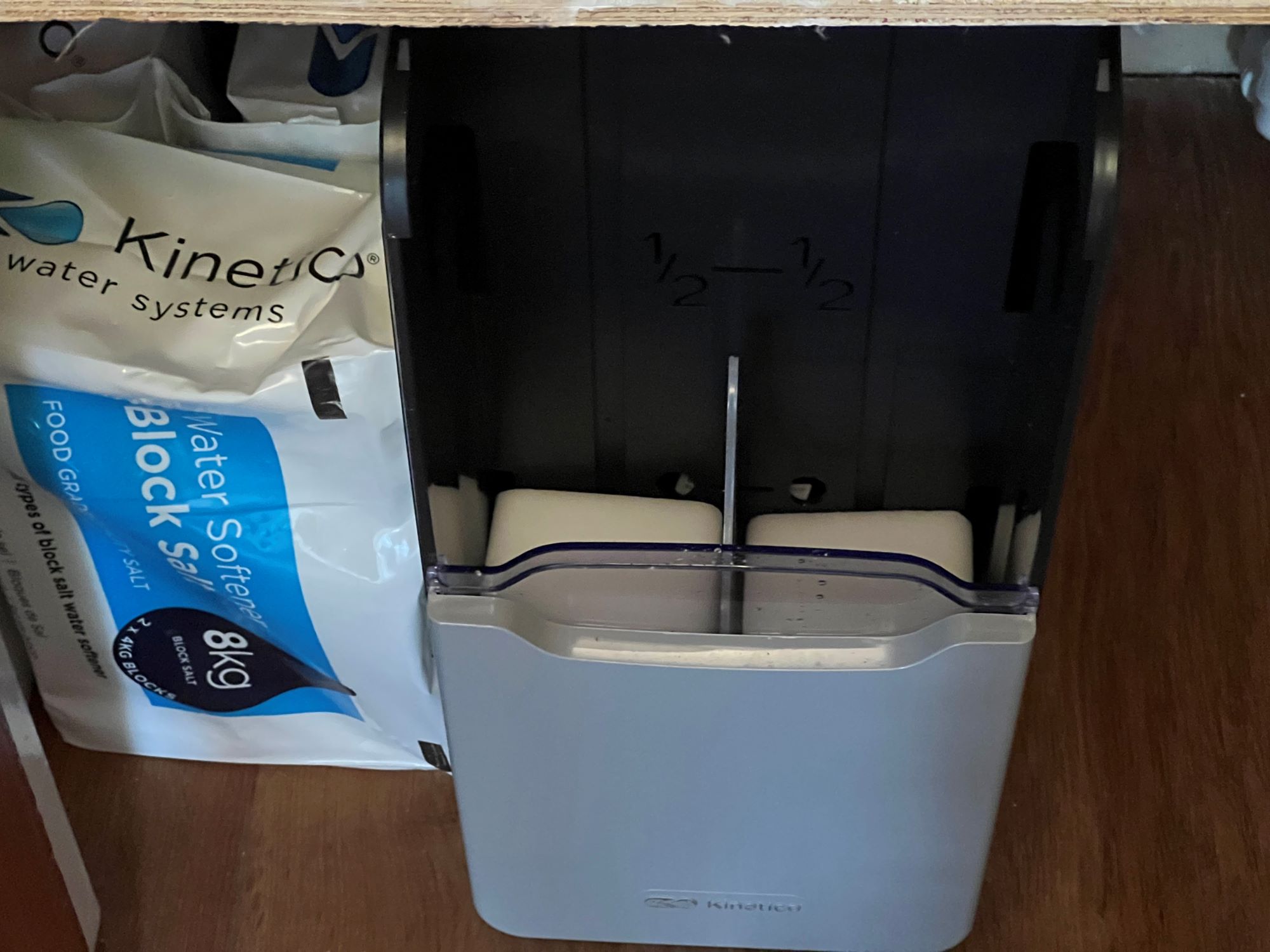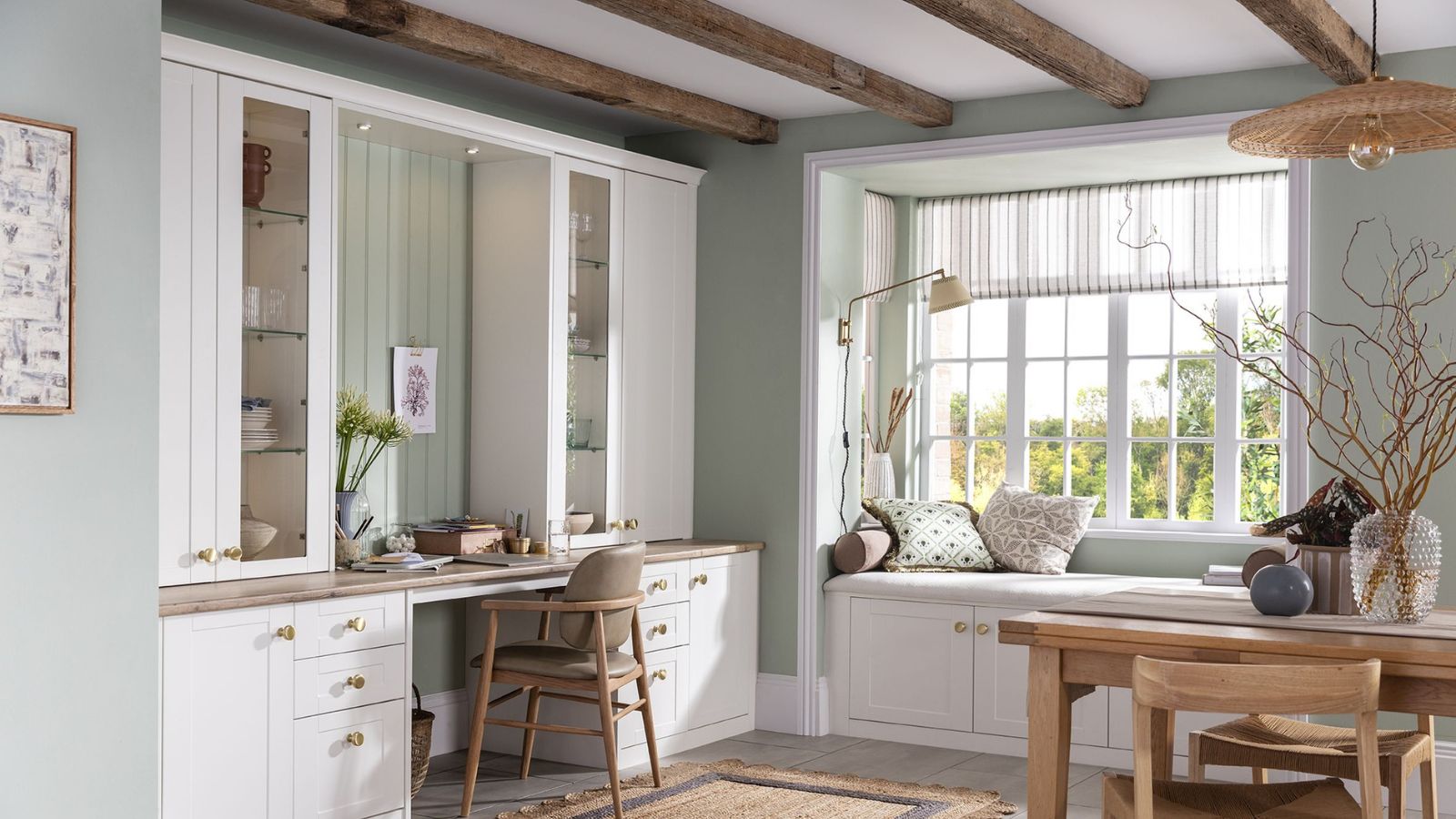Why I wish I'd installed my Kinetico water softener years ago
After enduring hard water for years, David Hilton decided to test drive a Kinetico water softener. Here's what he has to say about the impressive results

If you live in an area with hard water, like me, you’ll understand the trials and tribulations that come with it: appliances with a shorter life, stubborn limescale on taps, and those annoying streaks on tiles and glass panels.
It always hurts when you have to fork out for new appliances or put up with the unsightly appearance of limescale on your shower head or kitchen taps. So, during a recent home renovation I decided to look into what could be done about this common household problem.
There are two different solutions that I tried: water conditioners and water softeners. In this article, I'll be sharing my thoughts on both tactics.
Water conditioner vs water softener
You may be wondering 'what is the difference between a water conditioner and a water softener?'
Water conditioners: A water conditioner has no moving parts. It looks (from the outside) like a short piece of pipe. As the water passes through the ‘pipe’ it changes and the scale is no longer as ‘sticky’. So, although the scale is still present, it’s easier to wipe away. The best bit? No additional water, chemicals, or electricity is needed.
Water softeners: A water softener actually softens the water. It's a bigger appliance that softens the water as the water runs through food grade resin beads (like this water purifying shower head, previously reviewed on Homebuilding). The beads are periodically flushed with a salt to ‘clean’ them. A water softener typically doesn't use any electricity but you will use around 5% extra water to flush the system. You'll also need to replace the salt blocks periodically, depending on how much water you use as a household.
Now, to the million-pound question: did I opt for a conditioner with no running costs or a softener with some small costs? Being a tad indecisive, I gave both a whirl!
The water conditioner made scale easier to remove
I tried out the water conditioner first and then, a couple of years later, I fitted a water softener to see the difference. I got my water conditioner from Halcyan and it was very simple to install. I simply fitted it to the main cold water feed in our home.
In all honestly, I didn't notice an immediate difference to our water. However, after a while I noticed that any limescale that formed was easy to wipe away, especially on new taps and fittings. This helped keep our kitchen sparkly clean. For anyone familiar with the hard water headache, this is definitely an improvement.
Bring your dream home to life with expert advice, how to guides and design inspiration. Sign up for our newsletter and get two free tickets to a Homebuilding & Renovating Show near you.
Installing a Kinetico Premier Water Softener
Ultimately, a water conditioner is all well and good but it's not a water softener. I wanted that soft water feeling for the shower (I say I wanted it but in reality there was a fair amount of persuasion from the rest of the family). So, after doing my research I opted for the Kinetico Premier water softener and one of their water filters.
The Kinetico Premier has two tanks of beads that get flushed at different times, so you always get soft water delivered to the home, even if it is flushing. This meant that the installation process was bit more complicated than the process of fitting the conditioner. You need accessible space to be able to change the salt blocks —which you can purchase easily online from Amazon — and the cold water pipes are plumbed through the system, so need to be in close proximity. You also need a drain connection for when the unit flushes the beads but it doesn't need an electrical connection.
Installing a water softener is a bit more involved than fitting a simple water conditioner. But the result? Absolutely worth it.
My thoughts on the Kinetico water softener
Post-installation, the difference to my drinking water was palpable. The water felt silkier, and we used a lot less soap as a household. The only slight negative is that when the unit flushes you can hear it running the water into the drain and you can't set the time of the flush, as it's around every 400 litres of use. However, this was quite easily remedied by fitting an angle to the inlet pipe so that the water no longer free-fell into the drain but instead ran along the side of the pipe.
The whole setup cost about £1500, and even though there are more budget-friendly options, I couldn't be happier. The whole installation took less than a day and that included the new connection to a drain that ended up needing additional pipework, air inlet valve and non-return valve to be installed. This was all taken care of by the installer who was very focussed on getting it absolutely right.

Do I recommend buying a water softener?
Absolutely. The benefits of a softener go beyond the luxurious feel of soft water. As a household, we have saved money on cleaning products, encountered less buildup in our pipes, and noticed significantly fewer streaks on our wet-room surfaces.
Both the water conditioner and the water softener worked – albeit in very different ways and with different outcomes – so you really need to determine your expectations and then install the system that is right for you and your home.
David is a renewables and ventilation installer, with over 35 years experience, and is a long-standing contributor to Homebuilding and Renovating magazine. He is a member of the Gas Safe Register, has a Masters degree in Sustainable Architecture, and is an authority in sustainable building and energy efficiency, with extensive knowledge in building fabrics, heat recovery ventilation, renewables, and also conventional heating systems. He is also a speaker at the Homebuilding & Renovating Show.
Passionate about healthy, efficient homes, he is director of Heat and Energy Ltd. He works with architects, builders, self builders and renovators, and designs and project manages the installation of ventilation and heating systems to achieve the most energy efficient and cost effective outcome for every home.
- Gabriella DysonInteriors journalist and contributing editor

